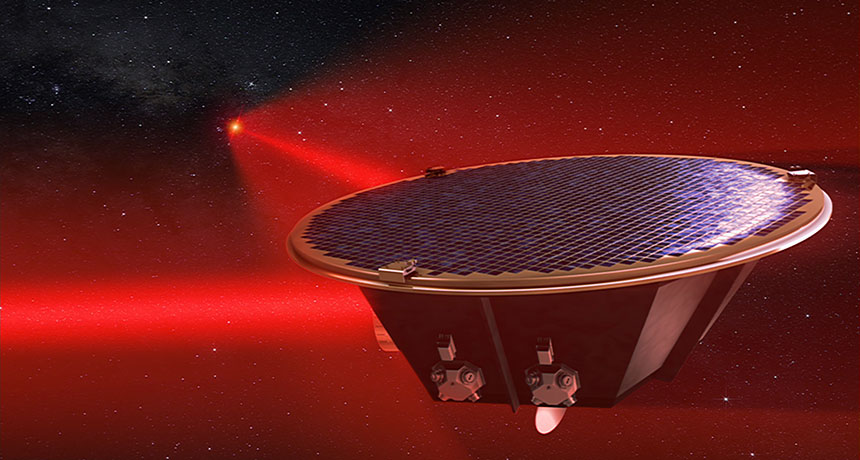Satellite trio will hunt gravitational waves from space

The hunt for gravitational waves is moving upward. A space-based detector called the Laser Interferometer Space Antenna, or LISA, was selected as a mission in the European Space Agency’s science program, the agency announced June 20.
LISA will consist of three identical satellites arranged in a triangle that will cartwheel through space in orbit around the sun just behind Earth. The spacecraft will use lasers to detect changes in the distance between each satellite. Those changes would indicate the passage of gravitational waves, the ripples in spacetime that massive bodies such as black holes shake off when they move.
The spacecraft was originally planned as a joint mission between ESA and NASA, but NASA pulled out in 2011 citing budget issues. In December 2015, ESA launched a single satellite called LISA Pathfinder to test the concept — a test it passed with flying colors.
Interest in LISA increased in 2016 after researchers at the ground-based LIGO detectors announced that they had finally observed gravitational waves. LIGO is best suited for detecting the crash caused when dense objects such as neutron stars or solar-mass black holes collide.
LISA, on the other hand, will be sensitive to the collision of much more massive objects — such as the supermassive black holes that make up most galaxies’ cores.
The mission design and cost are still being completed. If all goes as planned, LISA will launch in 2034.